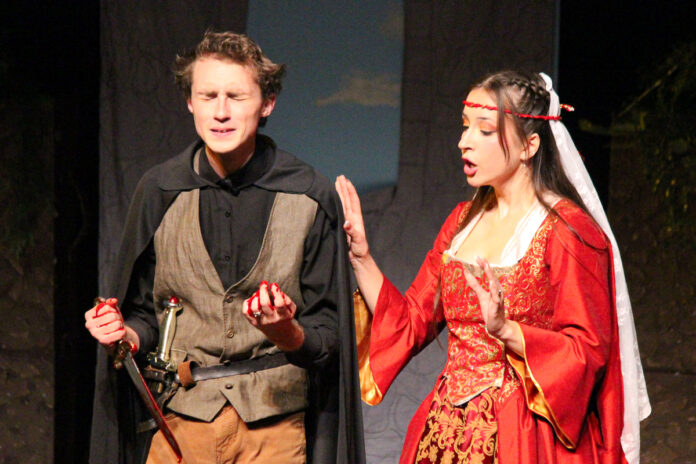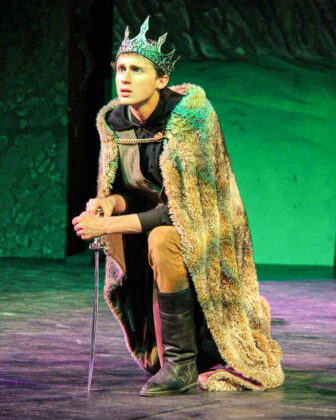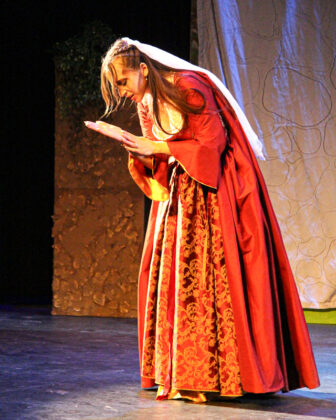
Sock ‘n’ Buskin Theatre Company’s production of Shakesphere’s Macbeth portrayed the classic tale through a psychological lens, shedding light on the guilt and madness that consumes Macbeth and Lady Macbeth.
As one of Shakespeare’s ten tragedies, the play begins with Macbeth as a Scottish general in King Duncan’s court and ends with the complete unraveling of his character.
Witches tell Macbeth he will one day be Thane of Cawdor and King of Scotland. He is warned, however, that his descendants will not be kings. Macbeth’s lust for power soon leads him to murder, and the witches’ prophecy comes true, but at a cost—Macbeth becomes consumed with guilt over his deeds.
In contrast to other adaptations that focus on morality or politics, director Bo Doyle centered the play around Macbeth and Lady Macbeth’s emotional distress. Doyle played with lighting and staging by depicting a deceased general ascending the auditorium’s stairs, with Macbeth being the only person who can see him. This portrayal of madness transcended traditional acting and made the audience feel as if the play was coming off the stage and into their world.
Alec Kyte brilliantly captured the essence of Macbeth, portraying his character’s complex development as he was overcome with paranoia and lust for power. This rendition shone most in the ruthless king’s interactions with other characters, as his demeaning tone often caused servants to scurry away like mice. Additionally, in the feast scene, Kyte captivated the audience by showing how the king’s fear and obsessive nature are closely intertwined.
Daria Baranau stole the show as Lady Macbeth. Baranau portrayed the lady’s cunning and ambitious nature perfectly, egging on Macbeth in her murderous intentions for power. In her opening dialogue, Baranau drew attention to her hands as she wrung them together in a brilliant foreshadowing of the eventual madness that would lead her to believe her hands are always bloody.
Though Macbeth is a tragedy, supporting actors Tess Dupont and Siena Ierullo-Gerrior added humour through their portrayal of the queen’s doctors. Lily Smales also got some chuckles from the audience in her portrayal of Macduff’s son, a snarky little boy.
The brilliance of Sock ‘n’ Buskin’s Macbeth shone in the details. Macbeth began the play wearing a simple vest and pants, and as his political power increased, so too did his costume. When Macbeth became King of Scotland, he wore a crown and a lavish fur cape, reflecting a visual distinction between him and his subordinates. Likewise, after the queen’s death, Macbeth stripped his lavish clothes and returned to the simple attire he began with.
Upon first glance, the set design seemed to be nothing special—painted highland scenery with trees in between canvases. Toward the end of the play, however, the set became functional, with characters hiding behind the trees and tearing them down in battle.
Audio staging was also simple but effective, increasing senses of paranoia and madness throughout the play. Knocking effects were first introduced after Macbeth and Lady Macbeth committed murder and appeared again when Lady Macbeth was going mad. As well, the sounds of footsteps haunted Macbeth during the feast as he is convinced a murdered general has come back from the dead.
In an emotional performance, Sock ‘n’ Buskin’s Macbeth pays homage to the classic play by using Shakespearean language and simple set designs, while letting the complexities of Macbeth’s madness take centre stage.
Featured image by Brianna Jamieson.







